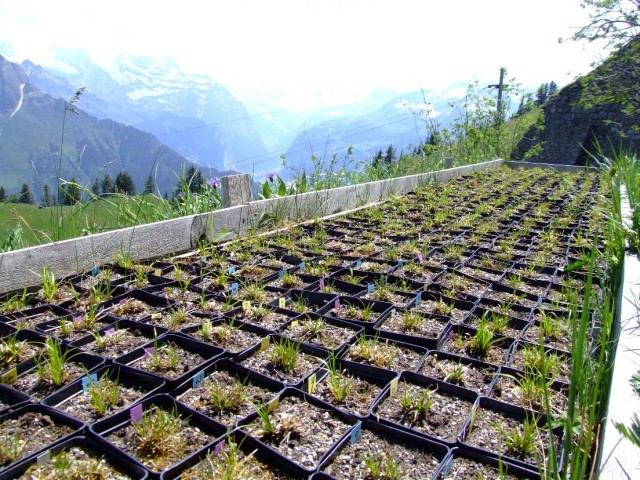autor Anton Zolotarjov
autor Anton Zolotarjov
autor Linda-Liisa Veromann-Jürgenson
autor Kersti Püssa
autor Anton Zolotarjov
autor Anton Zolotarjov
autor Linda-Liisa Veromann-Jürgenson
autor Kersti Püssa
Species experience heterogeneous environments across their distribution area. Different biotic and abiotic factors affect populations within species and often result in regional differentiation. Under differing selection pressures, populations vary in their plastic and adaptive response. Life history traits and population characteristics shape the direction and strength of the response, among others commonness and frequency of species and populations size. Besides, hybridization between closely related taxa may affect their regional differentiation.
We performed a reciprocal transplant experiment with two closely related sedge species Carex flava and C. viridula, who differ in their commonness and population size. Putative hybrid individuals collected in the sites where the two taxa co-occurred were added to the experiment. This paper demonstrates the effect of environment and climatic factors on the phenotype and performance of two hybridizing sedge taxa and their putative hybrid. The two taxa showed some common evolutionary patterns where they co-occur in the same region, but also differences suggesting a high degree of independent evolution. Hybrids performed well in all transplant sites. Moreover, differential adaptation and maladaptation were detected and reasons discussed. Overall, our results indicate that plasticity, genetically determined variation and GxE interactions all contribute to regional differentiation of the closely related study species. Hybridization did not lead to completely parallel evolutionary patterns, but the less common species´ showed slightly more genetic differentiation between populations than the more common species, while the latter showed more evidence for regional adaptation.
Citation: Schmidt, L., Schmid, B., Oja, T., & Fischer, M. (2018). Genetic differentiation, phenotypic plasticity and adaptation in a hybridizing pair of a more common and a less common Carex species. Alpine Botany, doi.org/10.1007/s00035-018-0211-8 (link to full text)
C. flava, C. viridula and their putative hybrid, independent of their origin region, responded to the environmental conditions in high elevation transplant garden (Schynige Platte, Switzerland 1976 m.a.s.l.) with reduced growth
Abstract:
Phenotypic variation may be genetically determined or reflect phenotypic plasticity. More common plants are expected to be less differentiated between and within regions and more adapted than less common ones. However, such differences might not develop in hybridizing species which cannot evolve completely independently. We collected 311 genets of Carex flava, 215 of C. viridula and 46 of their hybrid C. × subviridula from 42 natural populations in cold temperate Estonia, mild temperate Lowland Switzerland and alpine Highland Switzerland. Three plantlets from each genet were planted to three experimental gardens, one in each region. We measured survival, growth, reproduction and morphological traits. The experimental transplants showed strong plasticity and grew smallest in the alpine garden. The less common C. viridula was slightly more differentiated between regions of origin than the more common C. flava and the hybrid. However, this depended on the experimental garden. Significant origin-by-garden-by-taxon and taxon-by-garden interactions suggest differential adaptation among populations and taxa. Regional differed from non-regional plants in several traits indicating both adaptations and, especially for C. viridula, maladaptations to the home regions. For C. flava, plant seed production was higher when mean annual temperature and precipitation were more similar between population of origin and garden, suggesting local adaptation to climate. Hybrids were intermediate between parental taxa or more similar to one of them, which was retained across gardens. We conclude that plasticity, genetic variation and genotype–environment interactions all contributed to regional differentiation of the closely related species. Hybridization did not completely align evolutionary patterns, and the less common species showed slightly more genetic differentiation between populations and more maladapted traits than the more common one.